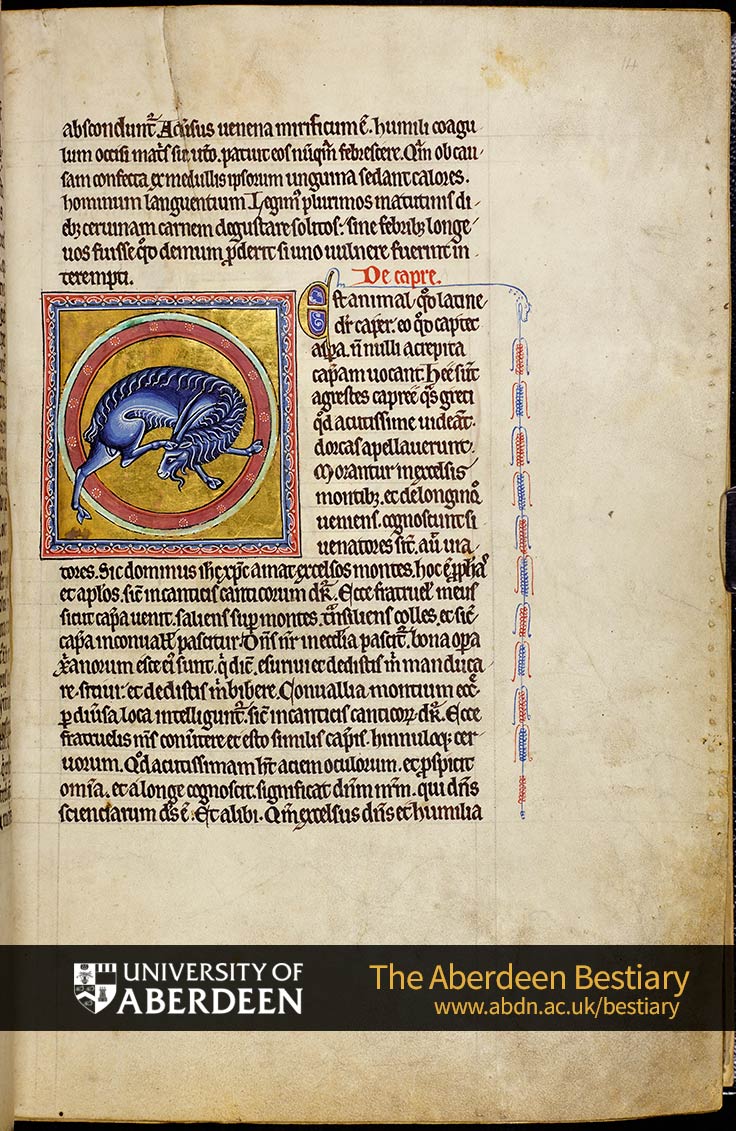Folio 14r - Deer, continued. De capre; the goat.
The rennet of a fawn killed in its mother's womb is a marvellous remedy against poisons. It is known that deer never grow feverish. For this reason ointments made from their marrow bring down sick men's temperatures. We read that many men who have regularly eaten a small amount of venison since their early days have lived for a long time unaffected by fevers; but ultimately it fails them as a remedy if they are killed by a single blow. Of the goat There is an animal called in Latin caper, goat, because it chooses, capere, to live in rugged places; some call it capra from crepita, 'a rustling noise'. These are the tame goats which the Greeks called dorcas, gazelle, because they have very sharp sight. They live in high mountains and can tell if men approaching a long way off are hunters or travellers. In the same way, our Lord Jesus Christ loves high mountains, that is, the prophets and Apostles, as it says in the Song of Songs: 'Behold, my beloved cometh leaping upon the mountains, skipping upon the hills (see Song of Solomon, 2:8). As a goat grazes in the valleys, our Lord grazes on the church; the good works of Christian people are the food of him who said: 'For I was an hungred, and ye gave me meat; I was thirsty, and ye gave me drink.' (Matthew, 25:35) By the valleys of the mountains are understood the churches spread through different regions, as it says in the Song of Songs: 'My beloved is like a roe or young hart.' (Song of Solomon, 2:9) The fact that the goat has very sharp eyesight, sees everything and recognises things from a long way off, signifies our Lord, who is the lord of all knowing and God. And elsewhere it is written: 'Though the Lord be high yet hath he respect unto the lowly

